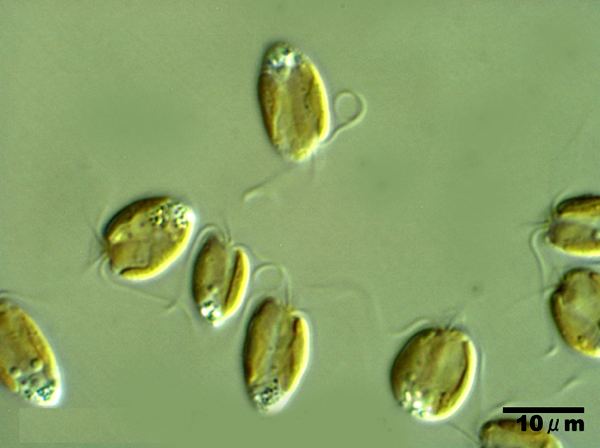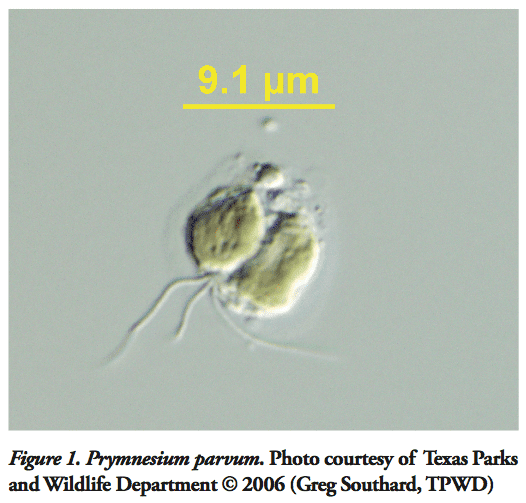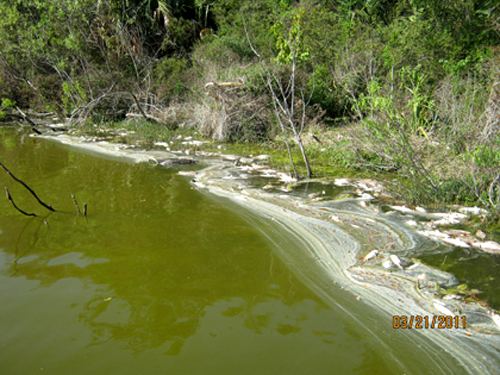Domain Eukaryota Order Prymnesiales Rank Species | Family Prymnesiaceae Scientific name Prymnesium parvum | |
 | ||
Similar Haptophyte, Chrysochromulina, Prymnesiophyceae, Golden algae, Alexandrium | ||
Prymnesium parvum is a species of haptophytes (=Prymnesiophyta). The species is of concern because of its ability to produce a toxin, prymnesin. It is a flagellated alga that is normally found suspended in the water column. It was first identified in North America in 1985 and it is not known if it was introduced artificially (e.g., an invasive species or missed in previous surveys). Toxin production mainly kills fish and appears to have little effect on cattle or humans. This distinguishes it from red tide, which are algal bloom whose toxins lead to harmful effects in people. Although no harmful effects are known, it is recommended not to consume dead or dying fish exposed to a P. parvum bloom. Prymnesium parvum of Haptophyta is sometimes termed a golden alga or a golden brown algae as is Chrysophyceae of Heterokontophyta but the taxonomy of algae is under complex revision leading to contradictions in terms especially in non scholarly texts such as those from state wildlife departments.

Biology

P. parvum grows in a salinity range of 0.1%–10% with an optimum at 0.3%–6% although strains collected in different places appear to have different salinity tolerances. The alga produces dimethylsulfoniopropionate (DMSP) and other unknown polyols, likely as an adaptation to osmoregulation. The environment must be between 2 °C (36 °F) and 30 °C (86 °F) for P. parvum to live. Growth at a pH of as low as 5.8 has been observed, but cells typically prefer higher pH ranges. The organism prefers highly light environments, but growth can be inhibited by excessive light (photoinhibition). The organism is capable of heterotrophic growth in the dark in the presence of glycerol and grazes on bacteria, especially when phosphate is limited. It has therefore been hypothesized that P. parvum satisfies its phosphate needs by consuming bacteria. P. parvum can use a wide range of nitrogen sources, including ammonium, nitrate, amino acids (which ones apparently depends of pH), creatine, but is unable to use urea.

New evidence has shown that the toxins produced by this alga are induced by physiological stresses, such as nitrogen and phosphorus depletion due to competition with the environment.




